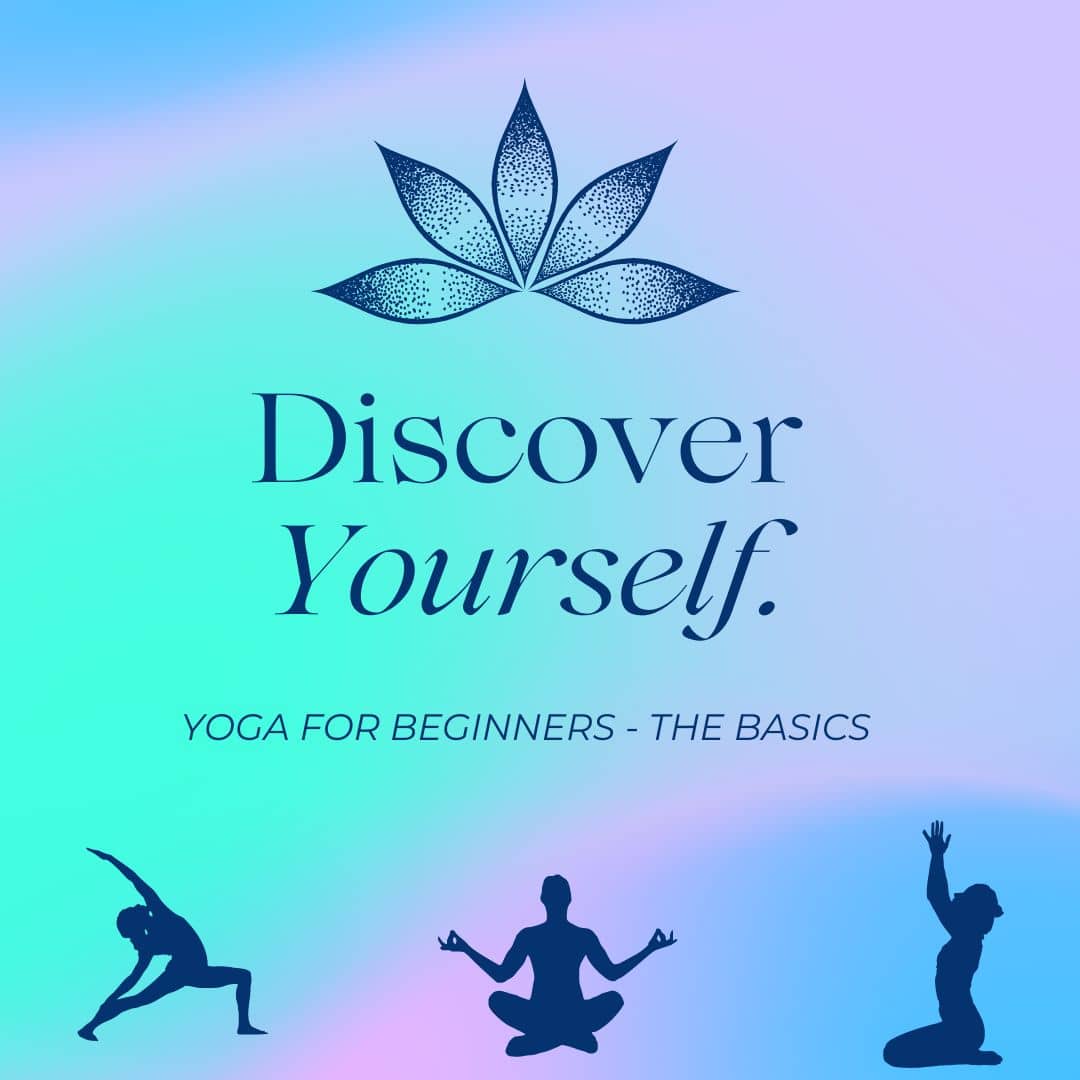I am so glad and appreciate your interest in learning about yoga.
Yoga, in its most basic definition, is the union of the physical, mental, and spiritual selves. In a real sense, yoga is a way to reverse the process of creation and break free from the endless circle of births and deaths.
According to The Bhagavadgita, “Yoga is the Journey of Self, through the Self, to the Self,” which means that yoga is more than just performing some mental or physical exercises; it also involves connecting your actions, thoughts, life, and self with the divine or a divine purpose.
Pre-Requisites to Learn Yoga
Health
Yoga can only be practiced by those in good physical and mental health. Those recovering from fractures and mental insertions, as well as those with serious spinal issues like disc bulge or prolapse, require the guidance of a physiotherapist or trainer during private yoga sessions.
In the beginning, people with minor spine issues should take great care to identify which asanas they can perform and which ones they should avoid. Patients with high blood pressure should avoid static inversions and exerting asanas. Dynamic inversions are possible.
People with Vata body types should perform very static, slow asanas, while people with Pitta body types can perform moderately active asanas. Only kapha individuals are able to perform power yoga for an extended period of time without experiencing adverse effects like an increase in uric acid in the blood.
Attitude
To be qualified for yoga, one must be passionate about it. They will only receive a bodily benefit, either voluntarily or as a result of the doctor’s pressure. You can’t fully enjoy the process of practicing yoga if you do so with the goal of losing weight or gaining some other benefit in mind. Never practice yoga quickly or in a rush.
Discipline
Being on time, caring about others, eating at the right time, drinking enough water, eating the right amount and quality of food, prioritizing a good night’s sleep, and limiting time spent on social media are key. Be ready to gradually and steadily introduce adjustments to your behaviors.
Water
Drink three to four glasses of lukewarm water in the morning. After 7 o’clock in the evening, limit water consumption to 1 to 2 glasses of lukewarm water. A minimum of 40 minutes should pass after consuming any food or drink that requires digestion. After drinking water, there should be a 30-minute break before performing asanas.
The general rule is that if you have pretty good bladder control, you should use the restroom 6 to 8 times a day. Lung capacity and efficiency will undoubtedly increase with yoga asanas and pranayamas, and more moisture will be evaporated by breath. Lack of water intake will make you feel hotter inside and may cause constipation.
Food
You must consume wholesome, energizing food that is well-balanced with macro and micronutrients. It is crucial to chew your food thoroughly when practicing yoga because this is how self-analysis begins. Chew your food thoroughly to properly appreciate it and preserve the food’s inherent vitality.
Your stomach should feel light after eating. Leave the stomach 1/4 empty. Don’t fill it all the way. When food is digested thoroughly and consumed reverently, it will make you feel much better than when you eat mindlessly, quickly, or while you’re distracted.
Eventually, whatever we eat becomes a part of us in the form of blood, meat, fatty tissue, bones, bone marrow, and reproductive cells. Both the body and the intellect are given energy by it.
Hard-working individuals require rajasic food; else, their bodies won’t cooperate. People who should be mentally dull, such as prisoners, require a tamasic diet. Students and professionals who spend their days sitting at a desk require sattvic nourishment. Yoga practitioners’ bodies will become more sensitive to harmful foods, such as those that drain your life force and won’t accept them.
To boost micronutrients and fiber, include millet in your diet as a main ingredient at least once during the day. Avoid maida, white sugar, and meals that include artificial ingredients. Don’t be afraid of ghee; it offers the brain extra energy and, if consumed in moderation, really helps the body burn stored fat. Three to five table spoons are ideal.
Sleep
Lethargy will follow from sleeping too much. Weakness and disease will follow from not getting enough sleep. You can reduce the number of hours needed while improving your sleep quality.
To maintain good health, one needs 4 to 5 hours of deep sleep every night, which is only feasible between the hours of 10 p.m. and 4 a.m. Additional time of 1 to 2 hours for dreams or transition states, with digestion finished in the stomach. In order to have a good night’s sleep, yoga practitioners must finish dinner before 7 o’clock.
Elimination
The body generates waste as it uses and produces energy, most notably carbon dioxide, urine, stool, and certain wastes that need to be expelled through sweat. If these wastes are not regularly removed from the body, they become poisonous and cause several health issues.
Yoga asana practice done correctly will make you sweat. Breathing will take care of carbon dioxide. Proper urination will be ensured by an adequate water intake.
The majority of us have constipation and irritable bowels as a result of processed foods and due to lack of natural salts and minerals in drinking water. Despite the fact that yoga practice helps bowel movements, a constipated individual is not permitted to do yoga.
Eat more veggies and foods high in fiber. Before lunch or dinner, consume one bowl of uncooked vegetables or fruit. Consume one liter of warm water with one teaspoon of raw sea salt every week. Use non-addictive remedies like triphalachurna or senna (Swarnamukhi, Sonamukhi, or Sunamukhi) leaf powder if the issue still continues. At least twice a day, bowel movements should occur.
Self-Analysis
A yoga practitioner should begin to pay attention to their internal processes. Start with food and water. Consider your water intake. Take note of how drinking water, lukewarm water, tea, or coffee makes you feel after a while in the stomach. The same goes for eating; pay attention to how certain foods make you feel that day.
You can determine what is healthy for you and what is not only by observation. You will eventually be able to see your ideas come to life. On the road of yoga, this is a significant step. You have more control over your ideas and emotions when you learn to observe or witness them.
Instead of reacting, you will respond to every situation with complete attentiveness and awareness. You’ll get more intuitive. You’ll experience more joy because it’s inherent in our higher states of consciousness.
If any emotion arises, experience it fully and with the knowledge that you are doing it correctly. Then, you’ll find that after a while, it leaves no trace behind. Start paying attention to your breath whenever you are free after practicing yoga for a few months or years. You feel happy just to be breathing.
1. Balance between Practice, Family and Profession
A small amount of empathy for others will help you balance your practice, home life, and career. Practicing yoga without consideration for others can only serve to inflate your ego and suffocate those around you.
Yoga will hone your skills much like a sharpening a knife. Vegetables can be chopped more easily and painlessly with careful knife usage. You will become a more likable and endearing person if you show some concern for others.
Don’t push somebody to do yoga. If you enjoy practicing yoga, it should show it on your face and motivate others. If you are not vigilant, your advantages are pointless.
A little attention will help you become more adept at handling people, communicating, and working. How can I become more alert? Aspirationally, I wish for it. It will come.
2. Dress and Yoga Mat
In tropical countries, clothing made of stretchable cotton is recommended. Wear protective clothing when the weather is harsh. However, you should be able to move and stretch freely in the garment. Use just your own yoga mat when practicing.
3. Atmosphere
Yoga practice is more beneficial in a clean, well-ventilated environment than in an air-conditioned space. It is OK to practice in air-conditioned spaces when the weather is bad. If at all feasible, regularly clean the area with salty water.
Do’s and Dont’s
Do’s
- A universal proverb states that getting up and going to bed early makes a person healthy, wealthy, and wise
- Yoga practitioners should go to bed early, get a good night’s sleep, and wake up early to attend to nature’s call, thoroughly brush their teeth, take a bath, and begin their yoga practice while fasting. It can also be done one hour after a liquid diet, three hours after drinks, or five hours after substantial meals.Yoga could be practiced prior to taking a bath, but one should wait 30 minutes following practice before taking a bath
- Yoga should be practiced on a flat surface in an area with open windows and doors for ventilation and morning gentle sunrays for various reasons
- Yoga shouldn’t be done on the ground, on a cement or masonry floor. When beginning the practice, one should sit on a carpet, blanket, or clean cloth and face east or north in the morning and west or south in the evening
- Yoga should be practiced calmly, without rushing or getting tired. If someone is exhausted, they should take a little break and relax in a comfortable position
- Yoga should be practiced frequently every day, ideally at the same time
- When performing yoga, one should try to focus solely on the poses and block out any other thoughts
- Asanas direct the impurities in the body’s internal organs to move toward the urinary bladder; as a result, one should immediately urinate after practicing yoga
- If somebody feels the call of nature during a yoga practice, he must go and respond right away.
- One shouldn’t strive to suppress coughing, sneezing, etc. One can also sip on some water if they are thirsty. If someone sweats profusely while practicing yoga, they should slowly wipe it away with a cloth or their palms. It is preferable if it naturally dries in the air
- Asanas should be done first, then pranayama, and finally meditation
- After completing postures, always lie on your back breathing comfortably for 2 to 5 minutes
- In any situation, movement should be gradual. Avoid making quick or sudden movements
Dont’s
- Regular yoga practice should be avoided by women if they are menstruating or pregnant. They should indeed perform a particular set of asanas, though
- When doing yoga, wait 2 to 3 hours after eating a substantial meal
- After practicing yoga, wait 30 minutes before taking a shower or drinking water
- Yoga should not be practiced while unwell, after surgery, or while wearing a bandage for a fracture or sprain. They should consult professionals before practicing yoga
- Don’t workout vigorously just after yoga
- Yoga should not be practiced in dirty, smoke-filled, or foul smell-filled environments. Yoga also shouldn’t be done in strong winds.


